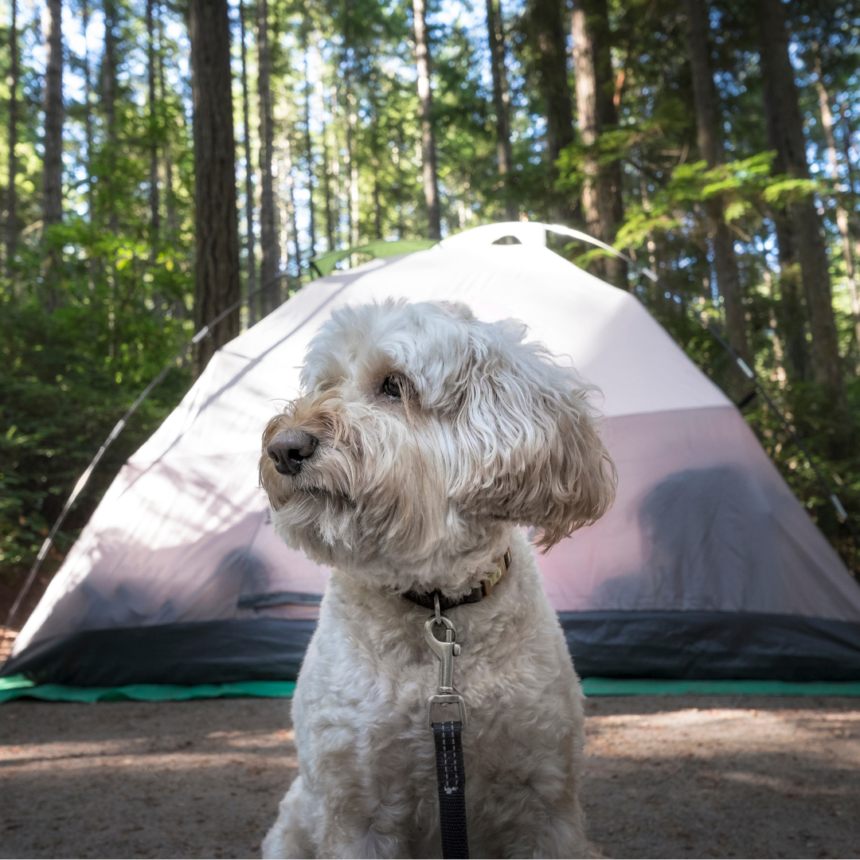Introduction
Embark on exciting adventures with your canine companion by exploring the wilderness together. This guide aims to enhance your outdoor experiences with your furry friend, emphasizing safety, enjoyment, and the bond you share. Whether you’re a seasoned outdoor enthusiast or a novice, understanding the essentials of hiking and camping with your dog is crucial.
Preparation for the Trail
Embarking on a hiking or camping adventure with your canine companion can be a rewarding experience, strengthening your bond and creating lasting memories. However, the key to a successful outing lies in meticulous preparation. Let’s delve into the crucial aspects of getting ready for the trail to ensure a smooth and enjoyable journey for both you and your furry friend.
Begin by investing in the right gear for your dog, considering factors like size, breed, and the specific demands of the trail. A well-fitted harness, a sturdy leash, and comfortable footwear (if necessary) are essential. Additionally, pack collapsible bowls for water and snacks to keep your pup energized.
Prioritize your dog’s health by ensuring they are up-to-date on vaccinations. Carry a copy of their medical records, including proof of vaccinations, in case of emergencies. Attach a durable ID tag to their collar with your contact information, providing a safety net in case your dog gets separated from you.
Selecting the right equipment can be daunting, considering the myriad options available. Tailor your choices to your dog’s needs, keeping their comfort in mind. If your dog is a senior or has mobility issues, consider a supportive backpack to share the load.
Trail Etiquette and Environmental Responsibility
Navigating the trails with your furry companion brings joy, but it’s crucial to uphold trail etiquette and environmental responsibility. Understanding the significance of these principles ensures a positive experience for everyone while preserving the beauty of nature.
Respecting trail etiquette involves being mindful of other hikers and wildlife. Keep your dog on a leash to avoid unwarranted interactions with fellow hikers or local fauna. Some trails may have specific leash regulations, so be sure to adhere to them.
Environmental consciousness is key to minimizing your impact on nature. Stay on designated trails to avoid disrupting delicate ecosystems and wildlife habitats. Dispose of waste responsibly, including both yours and your dog’s. Carry waste bags and pack out all litter to leave no trace behind.
Interacting with wildlife poses challenges, as not all animals may be receptive to canine companions. Keep a safe distance, minimizing disturbances to wildlife. Educate yourself on the local fauna and their behaviors, adapting your actions accordingly.
Navigating encounters with other hikers involves courteous communication. Alert fellow trail-goers of your dog’s presence and be prepared to yield the right of way. Not everyone may be comfortable around dogs, so maintaining control and being respectful is essential.
Health and Safety on the Trail
Embarking on outdoor adventures with your dog requires careful consideration of their health and safety. Prioritizing these aspects ensures a positive experience for both you and your furry friend, allowing you to navigate potential risks and challenges effectively.
Injuries can occur during trail activities, ranging from minor scrapes to more serious incidents. Carry a canine first aid kit that includes essentials like bandages, antiseptic wipes, and tweezers for removing debris. Familiarize yourself with basic first aid procedures, enabling prompt care in case of injuries.
Weather extremes pose challenges, especially in hot or cold conditions. Be mindful of your dog’s susceptibility to heat or cold, adjusting activity levels accordingly. Provide ample water and seek shade during warmer weather, while utilizing dog jackets or boots in colder climates for added protection.
Encounters with hazardous flora and fauna demand awareness. Research the local environment to identify potential threats, such as toxic plants or wildlife. Keep your dog on a leash to minimize contact with hazardous elements and steer clear of areas known for potential dangers.
Nutrition and Hydration
Ensuring your dog’s nutrition and hydration are well-managed is crucial for a successful trail adventure. Proper dietary considerations and ample water supply contribute significantly to your dog’s well-being during outdoor activities.
Maintaining your dog’s energy levels requires a well-balanced diet tailored to their specific needs. Portable and nutrient-dense dog food makes for convenient trail meals. However, be mindful of potential dietary challenges, such as allergies or sensitivities. Choose dog food that aligns with your pet’s nutritional requirements, and introduce new items gradually to gauge their tolerance.
Hydration is equally vital, especially during physical exertion. Carry a sufficient supply of water and a collapsible bowl for easy access. Plan routes that include water sources suitable for your dog to drink from, and monitor their hydration levels regularly.
Overcoming challenges related to nutrition and hydration involves proactive planning. Research dog-friendly trail foods, ensuring they meet your pet’s nutritional needs. Address potential water scarcity by strategically planning water breaks or carrying additional water supplies.
Emergency Preparedness
Being prepared for emergencies on the trail is a crucial aspect of ensuring both your safety and your dog’s well-being. Unforeseen circumstances, such as injuries or sudden illnesses, can occur, and having the right tools and knowledge is essential for a safe outdoor adventure.
One of the key challenges during outdoor excursions is the possibility of your dog facing injuries or falling ill. Recognizing signs of distress early on can make a significant difference. Keep a close eye on your dog’s behavior and look out for any unusual symptoms.
To address these challenges, it’s highly recommended to assemble a comprehensive canine first aid kit. This kit should include essentials like bandages, antiseptic wipes, tweezers for removing splinters or ticks, and any necessary medications your dog may need. Familiarize yourself with the contents of the kit and know how to use them effectively.
Additionally, understanding basic first aid principles applicable to dogs is vital. Learn how to clean wounds, apply bandages, and perform CPR if needed. Having this knowledge empowers you to take immediate action in case of an emergency.
Conclusion
In conclusion, this guide equips you with the knowledge and strategies needed to make your hiking and camping adventures with your dog safe and enjoyable. Remember, with careful preparation, a respectful attitude towards nature, and a commitment to your dog’s well-being, you can create lasting memories in the great outdoors.









